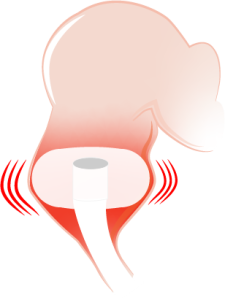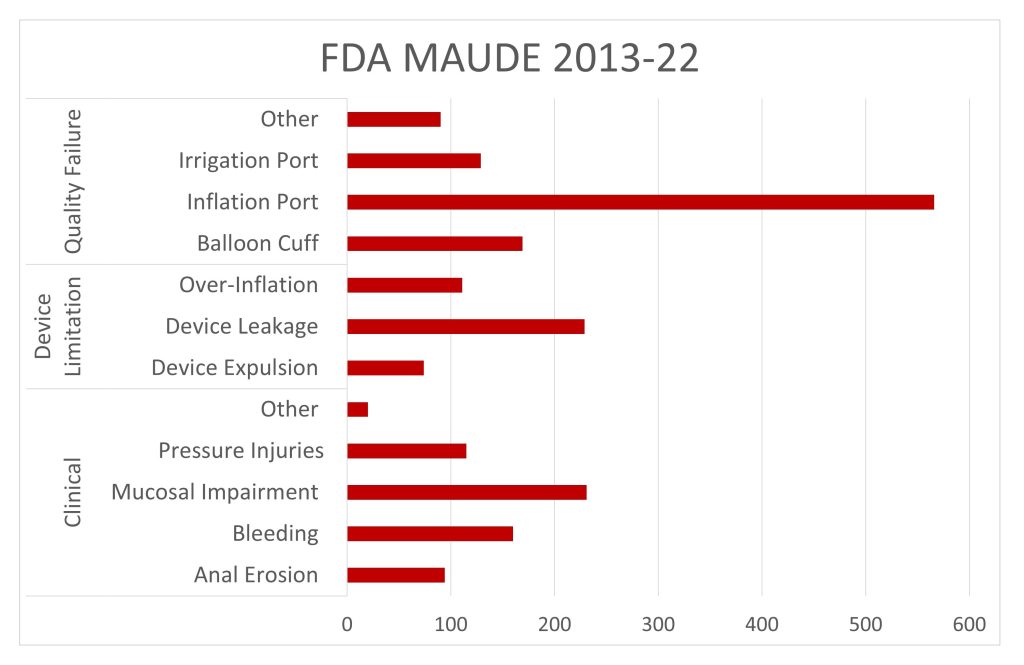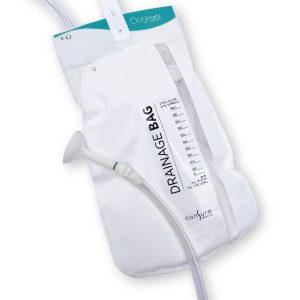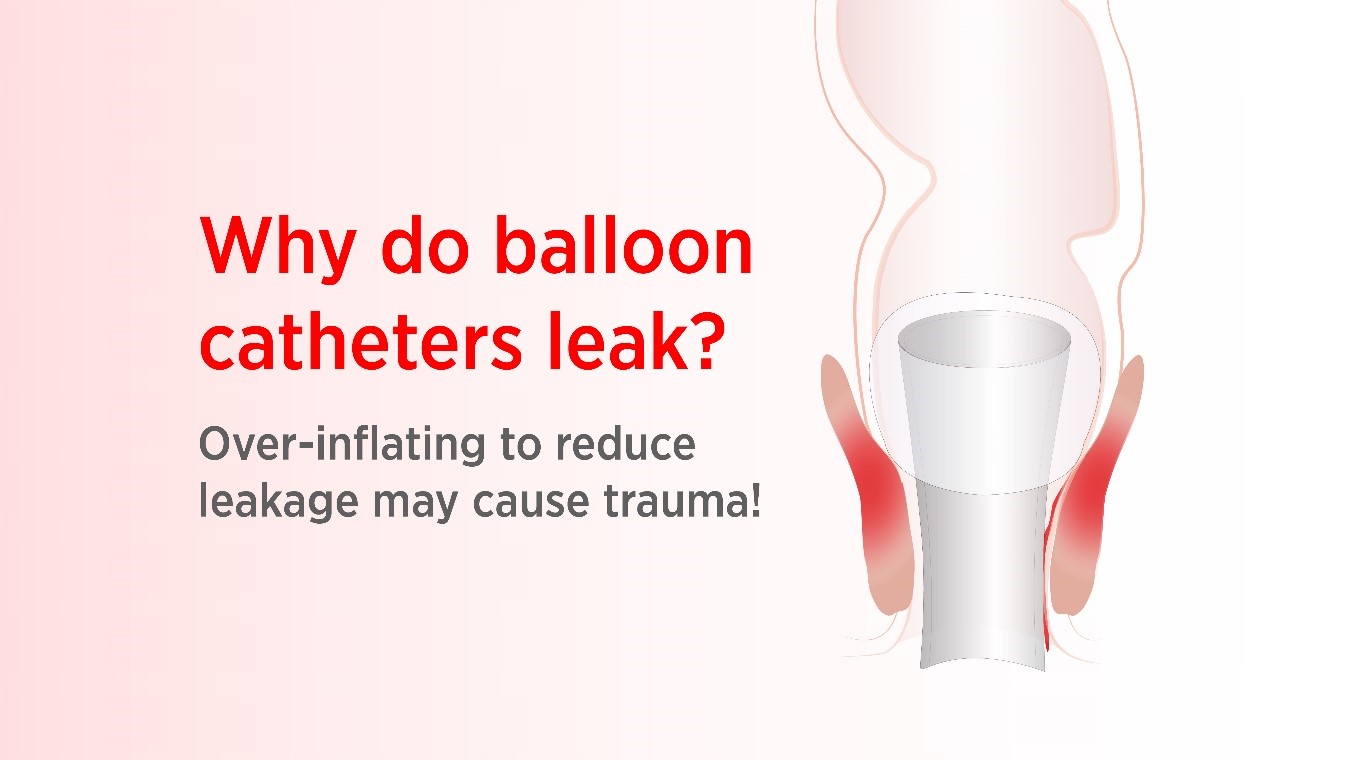Fecal incontinence and its complications can be serious issues, especially for acutely or critically ill patients. Left unattended, stool leakage can cause serious skin irritation that may lead to reduced skin integrity, pressure ulcers, and dangerous hospital-associated infections (HAIs). Leakage of stool may also interfere with the healing process of wounds, incontinence-associated dermatitis or injuries.
Managing fecal incontinence with traditional methods is daunting and time-consuming task for nursing staff due to frequent cleaning, changing and repositioning patients, along with changing pads and linens after each episode of fecal incontinence. Using an appropriate fecal management system (FMS) can reduce care time and help prevent complications of fecal incontinence
Inadequate fecal management system such as intrarectal balloon catheters (IBCs) can lead to various clinical complications. These high-pressure balloon at the anorectal junction strain the sphincter muscles. More specifically, it can damage the rectal mucosa that lines the intestine. Over-inflating the balloons can cause adverse events such as bowel perforations, bleeding, pressure injures leading to additional treatment cost, LOS .
About Intrarectal Balloon Catheters
Balloon catheters consist of a long tube with a disposable fecal incontinence pouch at one end and an inflatable retention balloon on the other. The nursing staff inserts the IBC into the rectum then inflates the retention balloon at the anorectal junction to keep the catheter in place. The IBC diverts the feces from the rectum into the collection bag.
IBCs are currently authorized for extended use as a stool management system, but the high pressure required to keep the balloon catheter in place can cause significant additional discomfort to critically- or acutely-ill patients. The pressure can also lead to complications, such as damage to the rectum or sphincter. Some practitioners try to reduce the constant strain on body tissues removing the device an hour each day, in what’s known as a “daily holiday.”

Balloon Catheters exerting high outward radial pressure
Underinflation of balloon can cause the tube to come out (expulsion) and result in leakage of intra-rectal balloon catheters. To avoid leakage users sometimes over-inflate the balloon which can further cause mucosal damage, sphincter trauma and rectal injuries. The high prevalence of peripheral leakage leads to cross contamination can increase susceptibility towards HACs complicating the patient’s hospital stay. The user experience of intrarectal balloon catheters varies among individuals. The US Food & Drug Administration maintains MAUDE (Manufacturer and User Facility Device Experience), that contains reports of adverse events and problems associated with the use of products. The database is used by the FDA to monitor the safety and efficacy of medical devices and to provide a platform to report potential adverse events. In an analysis conducted on reports between 2012 and 2022, over 1500 MAUDE complaints related to intrarectal balloon catheter were observed. One of the most common complications associated with the use of intrarectal balloon catheters is mucosal impairment. This can occur due to the trauma caused by the device’s insertion or removal, or due to over-inflation of the balloon.

FDA MAUDE IBC’s 2013-2022
Over-inflation of the balloon is one of the most common causes for a range of complications due to IBCs, including perforation of the rectum, leakage, patient discomfort, and many other problems. Numerous reports of extremely severe complications such as fistula, pressure injuries were also observed. These complications increase length of hospital stays, associated costs and expensive CMS penalties.
A recent study published in Wound Management & Prevention followed 50 patients who had an IBC inserted to treat fecal incontinence. Researchers observed complications in several patients. The most common issues and complications included over-inflation of the retention balloon, expulsion of the tube, temporary anal atony, and excessive leakage of stool. The longer the patient had the IBC, the higher their complication rate. These complications can lead to significant morbidity and mortality, and therefore, it is essential to be aware of them.
Qoramatic reimagines incontinence management

Image Credits: Consure Medical
Clearly, patients with fecal incontinence and the professionals who care for them need an innovative alternative to balloon catheters – Qoramatic reimagines incontinence management in non-ambulatory patients. Qoramatic is a non-balloon automated fecal management system which has a soft silicon indwelling receptacle that exerts zero radial pressure on rectal mucosa eliminating incidences of necrosis, rectal bleeding, sphincter injury. Unlike high pressure balloon catheters, the receptacle does not require any inflation, eliminating the incidences of over inflations and complications associated with it. The system has inbuilt suction and irrigation chamber which reduces manual interventions and saves 174 minutes of nursing time. Qoramatic uses negative suction to proactively void the rectum and divert fecal effluents away from the patient, mitigating incidences of leakage. This minimizes risk of HAIs, skin breakdown and cross contamination, thereby enhancing clinical outcomes.
For more information about the benefits of using Qoramatic to manage fecal incontinence, contact Consure Medical at [email protected]


